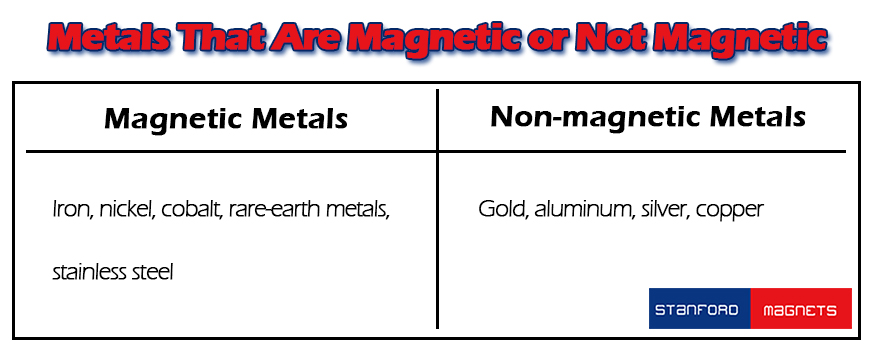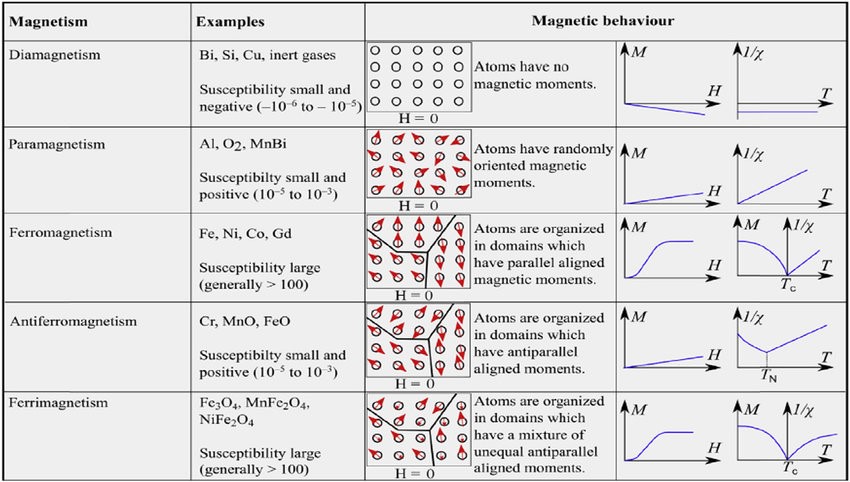Does Gold Magnetize?
Is Gold Magnetic?

--Is Gold Magnetic?
Wondering if gold is magnetic like other metals, such as Iron, Cobalt, and Nickel? While gold is in every way a metal, pure gold is not magnetic. In fact, Iron, Cobalt, and Nickel are the only metals that have magnetic properties.
However, gold can become a temporarily magnetic metal (just like annealed iron and steel) when it is placed in the presence of a strong magnetic field. The effect is similar to what you see when tiny paper clips are made magnetic by placing them beside a permanent magnet.
--Gold Alloys Are Magnetic
Pure gold on its own does not magnetize or stick to a magnet. But when about 20% of it is replaced with a metal like iron, the gold alloy may stick to a magnet or exhibit other magnetic properties.
Gold used in jewelry may also be magnetic depending on the alloys used, i.e, the metals combined with gold in the material. This includes 18k gold, 14k gold, 10k gold, and even white gold. There are different gold alloys. The most common metals that are alloyed with gold are zinc, copper, nickel, iron, cadmium, aluminum, silver, platinum, and palladium. These metals confer different amounts of magnetic strength to pure gold.
How Do Magnets Work?
The magnetism in magnets arises from the behavior of their electrons. In permanent magnets, the molecules are aligned so that their electrons spin in the same direction, creating a magnetic force. This force flows from the north-seeking pole to the south-seeking pole.
--How Do Magnets Attract Other Materials?
Magnets attract other materials because those materials possess similar properties that make the magnets magnetic. For example, magnets will never attract paper, plastics, or wood. This is because these materials do not have free electrons that can spin when a magnetic field is nearby.
Put in another way, magnets attract materials that have unpaired electrons that spin in the same direction. Keep in mind that these unpaired electrons are essentially the components that make a metal magnetic.
--But Gold Has Unpaired Electron?
Gold is the most electronegative of all metals. It indeed has unpaired electrons in its valence shell. However, these electrons are shared among atoms and hence, do not allow for magnetism to occur.
So in essence, metallic gold has no unpaired electrons. This is why it does not exhibit classical magnetism. You may also refer to this property of gold as diamagnetism — the unpaired electrons of gold create a field that weakly repels a magnet.
Which Metals Are Magnetic?
|
Type of Metal |
Description |
Examples |
|
Metals |
Strong magnetic metals that retain magnetism after the external field is removed. |
iron (Fe), nickel (Ni), gadolinium (Gd), dysprosium (Dy) |
|
Metals |
Weak magnetic metals that lose magnetism once the external field is removed. |
aluminum (Al), platinum (Pt), tungsten (W), magnesium (Mg), lithium (Li) |
|
Diamagnetic Metals |
Weakly repelled by magnetic fields and do not retain magnetism. |
copper (Cu), gold (Au), silver (Ag), zinc (Zn), bismuth (Bi), lead (Pb) |
|
Antiferromagnetic Metals |
Magnetic moments cancel out, resulting in no macroscopic magnetism. |
chromium (Cr), manganese (Mn) |
|
Ferrimagnetic Materials |
Contain iron oxides and show similar properties to ferromagnetic metals. |
 [1]
[1]
--Metals Magnetic
A number of metals, unlike gold, are actually magnetic. Magnetic metals include iron, nickel, cobalt, and rare-earth metals, stainless steel. These metals can be attracted to permanent magnets.
Note that almost all magnetic materials are metals. Zinc is only magnetic when you put it in a very strong magnetic field. It becomes slightly magnetic until you remove the magnetic field.
--Metals That Are Not Magnetic
In this category, we have popular examples like gold, aluminum, silver, and copper. The crystal structure of aluminum makes it a non-magnetic metal. The non-magnetic property of silver makes it easy to identify fake silver. Gold, as discussed earlier, is diamagnetic, as it only shows a very weak repulsion towards magnets. Copper interacts with magnets, a property that makes it useful for conducting and generating electricity.
--Types of Metals Magnetic
- Ferromagnetic Metals are strong magnetic metals that retain their magnetic properties even after the external magnetic field is removed. These metals include iron (Fe), nickel (Ni), cobalt (Co), gadolinium (Gd) at temperatures below room temperature, and dysprosium (Dy) also at temperatures below room temperature.
- Paramagnetic Metals are weak magnetic metals that do not retain magnetism once the external magnetic field is removed. Examples of these metals include aluminum (Al), platinum (Pt), tungsten (W), magnesium (Mg), and lithium (Li).
- Diamagnetic Metals: Weakly repelled by magnetic fields and do not retain magnetism, including copper (Cu), gold (Au), silver (Ag), zinc (Zn), bismuth (Bi), and lead (Pb).
- Antiferromagnetic Metals: Magnetic moments align in opposite directions, canceling out macroscopic magnetism, as seen in chromium (Cr) and manganese (Mn).
- Ferrimagnetic Materials: Contain iron oxides and exhibit magnetic properties similar to ferromagnetic metals, such as magnetite (Fe₃O₄).
Conclusion
Gold, in its pure form, is not magnetic. It is known as a diamagnetic material because it has a weak repulsive force toward magnets. But when gold is alloyed with metals like zinc, copper, nickel, iron, cadmium, aluminum, silver, platinum, and palladium, it may display magnetic properties. Aside from gold, other non-magnetic metals include aluminum, copper, and silver.
Thank you for reading and we hope it can help you have a better understanding of metals and other magnetic materials. If you want to learn more, check Stanford Magnets for more information.
Reference:
[1] Nisticò, Roberto. (2020). A synthetic guide toward the tailored production of magnetic iron oxide nanoparticles. Boletín de la Sociedad Española de Cerámica y Vidrio. 60. 10.1016/j.bsecv.2020.01.011.














